In this guide, we will demonstrate how to generate a lather with a shaving cream through a variety of methods which include the following: lathering with a shave brush and bowl, direct face lather with a brush and a hand lather.
Additionally, we will demonstrate signs that a lather is too dry or too wet. Lastly, we will answer some common questions about lathering.
3 Ways to Lather a Shaving Cream
First, let’s take a look at how to generate a traditional lather with a shaving brush and shaving bowl:
How to Lather with a Shaving Brush and Shaving Bowl
1. Blooming or Soaking the Shaving Brush
When generating a lather, let your shaving brush briefly soak in warm to hot water for one minute. This allows the water to be absorbed into the bristles and knot of the shaving brush:
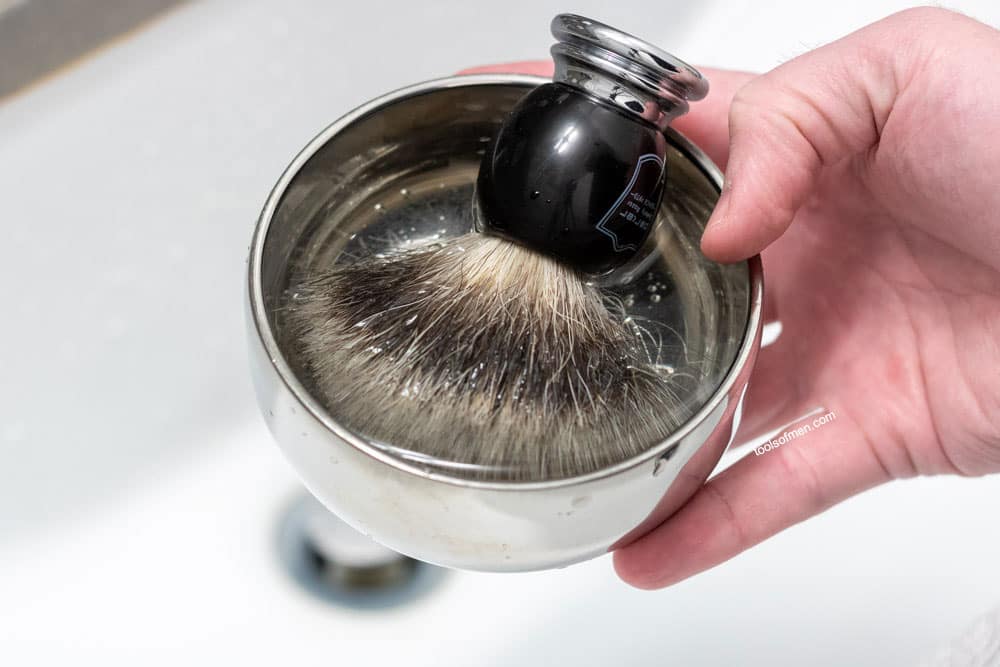
This step is known as blooming your shaving brush. This is important for animal-sourced fibers such as badger hair, boar hair, and horse hair shaving brushes.
Synthetic shave brushes, which are made from man-made fibers, are unable to absorb any water during this step. However, still getting the bristles wet is required when generating a lather.
2. Wring Out Excess Water from the Shaving Brush
Once the shaving brush has been soaked, you can wring out the excess water by gently squeezing the bristles as demonstrated in the picture below:
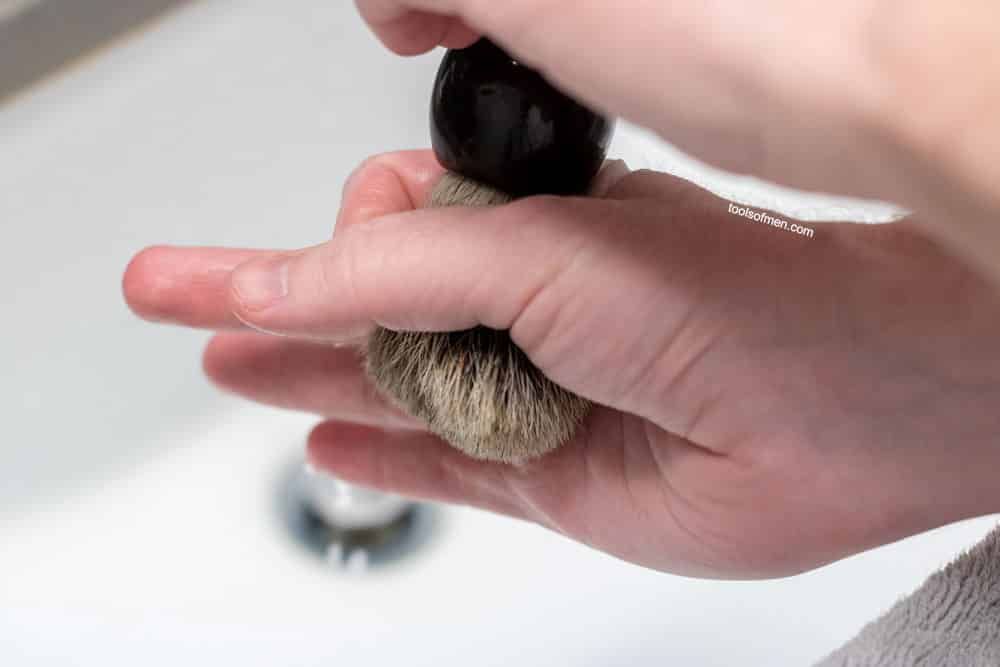
The shaving brush should be moist but not dripping with water once finished.
3. Add Shaving Cream to the Shaving Brush
If you have a soft-bodied traditional shaving cream such as Proraso, squeeze out approximately an almond-sized amount directly into the shaving brush:
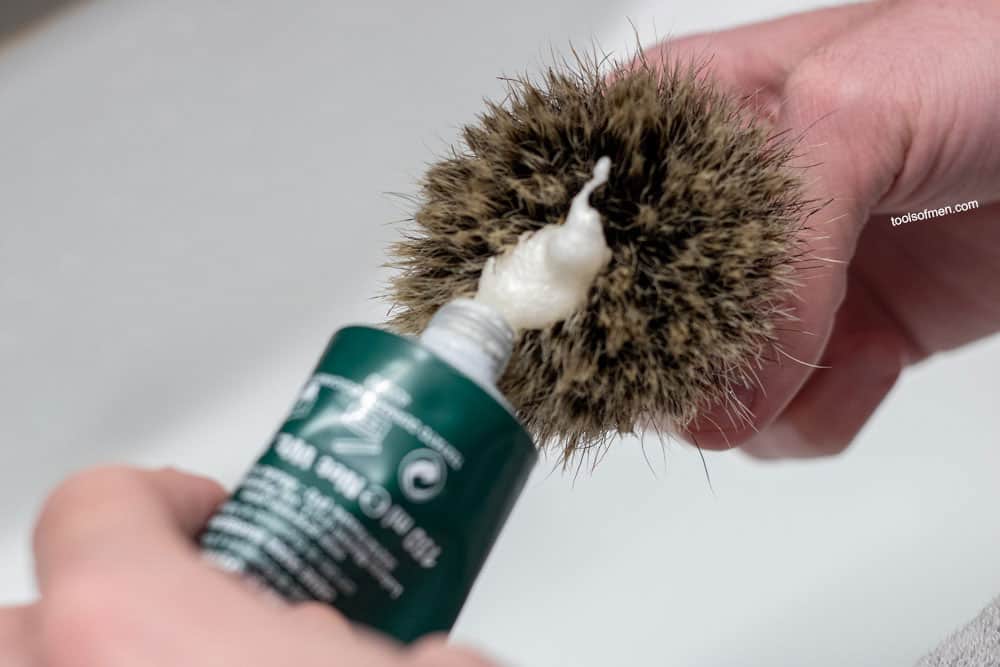
If you have a shaving cream that is packaged in a tub, then you will want to swirl the shaving brush in the tub until the tips of the bristles have picked up enough shaving cream:
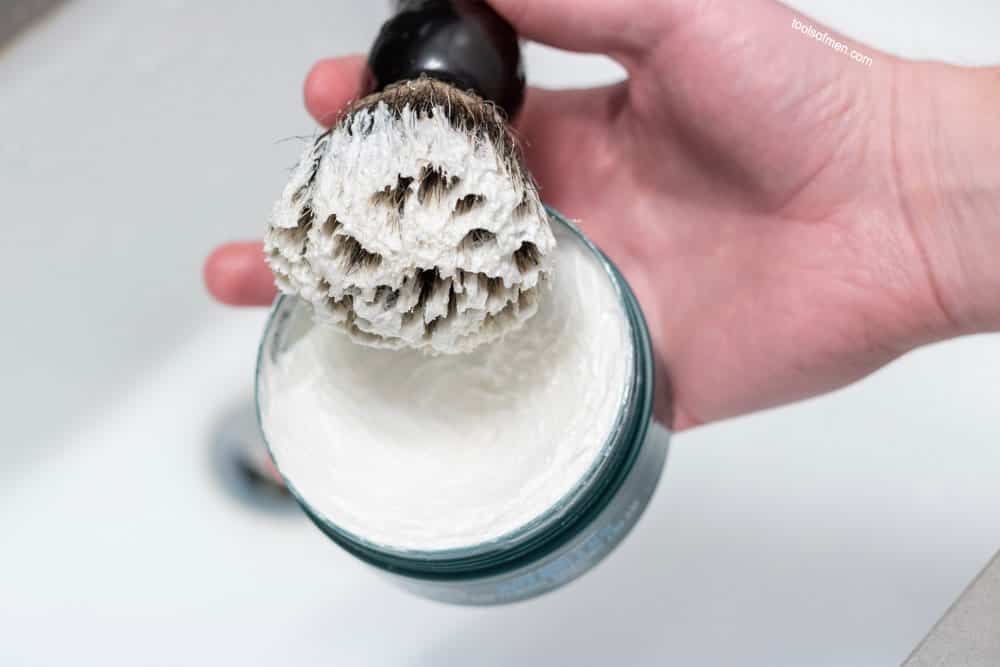
4. Mixing Shaving Cream and Water in A Shaving Bowl or Shaving Mug
Before you begin mixing your lather in a bowl or mug, you should add a few drops of water to the bowl first:
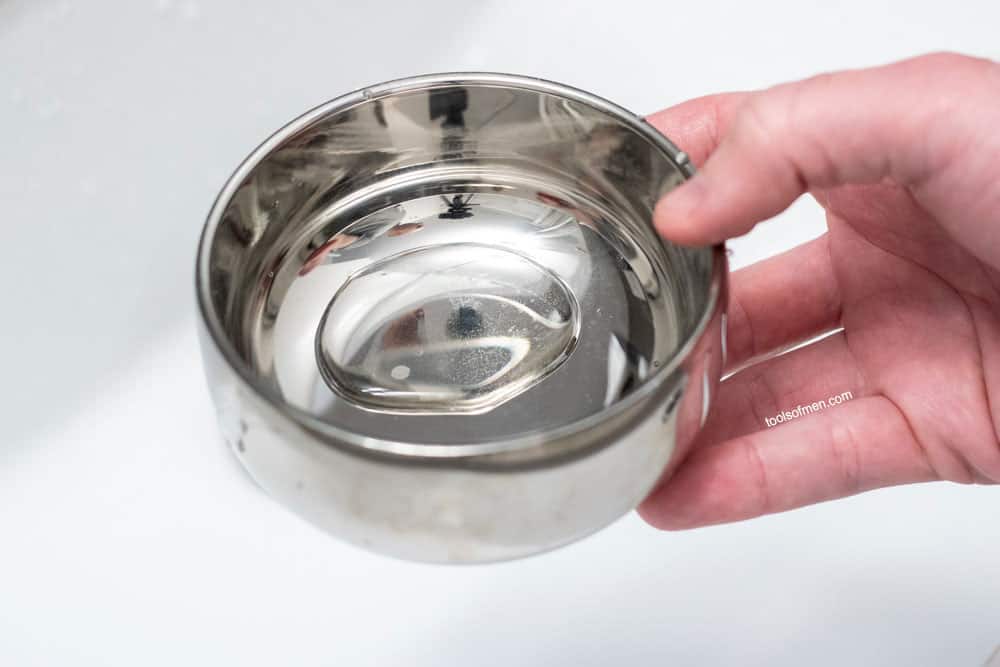
Once the water has been added, you can take your loaded shaving brush and begin mixing it in a circular motion in the bowl or mug. When mixing, you will want to add varying amounts of pressure to the shaving brush so the shaving cream can be worked into all the bristles.
Light Pressure
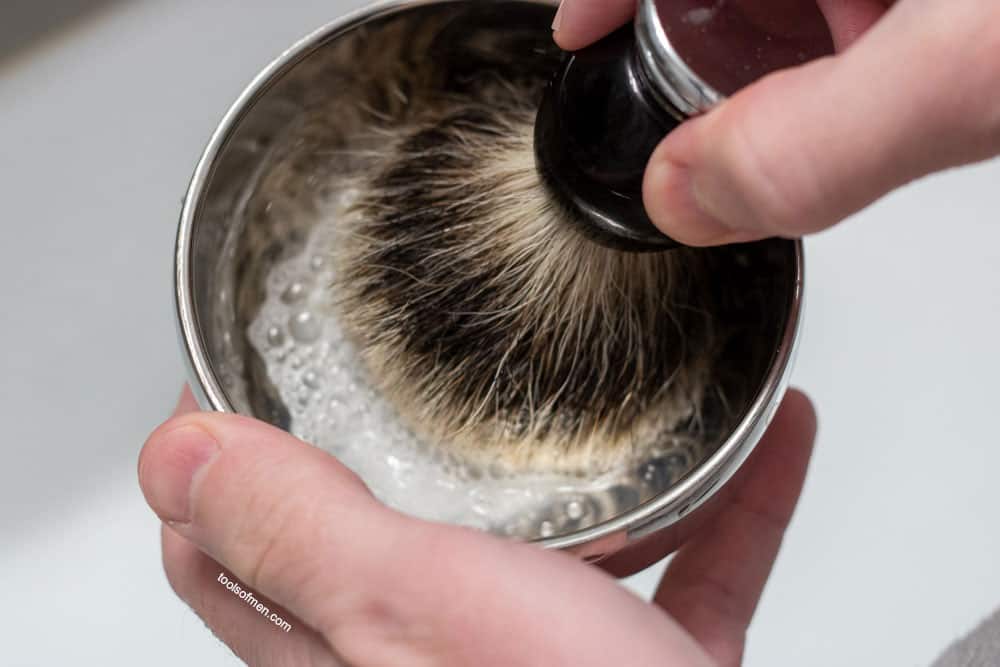
Moderate Pressure
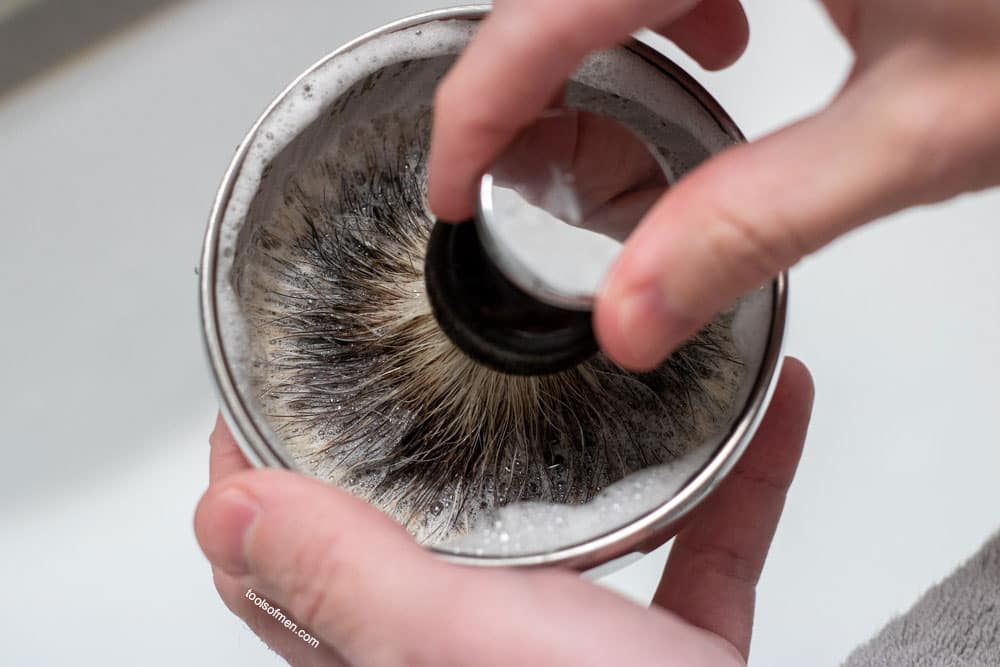
Alternate every so often in stirring the shaving brush both clockwise and counter-clockwise. There is no set time limit that a shaving brush should be stirred. Instead, you are looking for a rich and cushioned consistency to develop in the lather.
Drops of water will need to be added throughout this process until the lather fully develops. The ideal consistency of the lather should be one that has no visible bubbles and is dense looking:
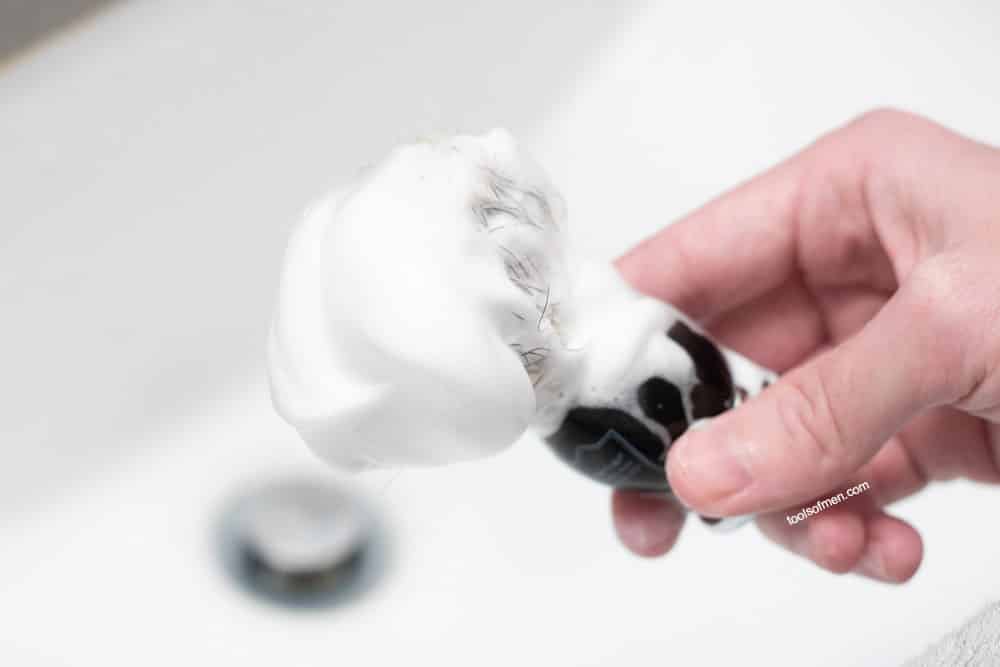
5. Application
When applying shaving cream to your face with a shave brush, you can either apply it in circular motions:
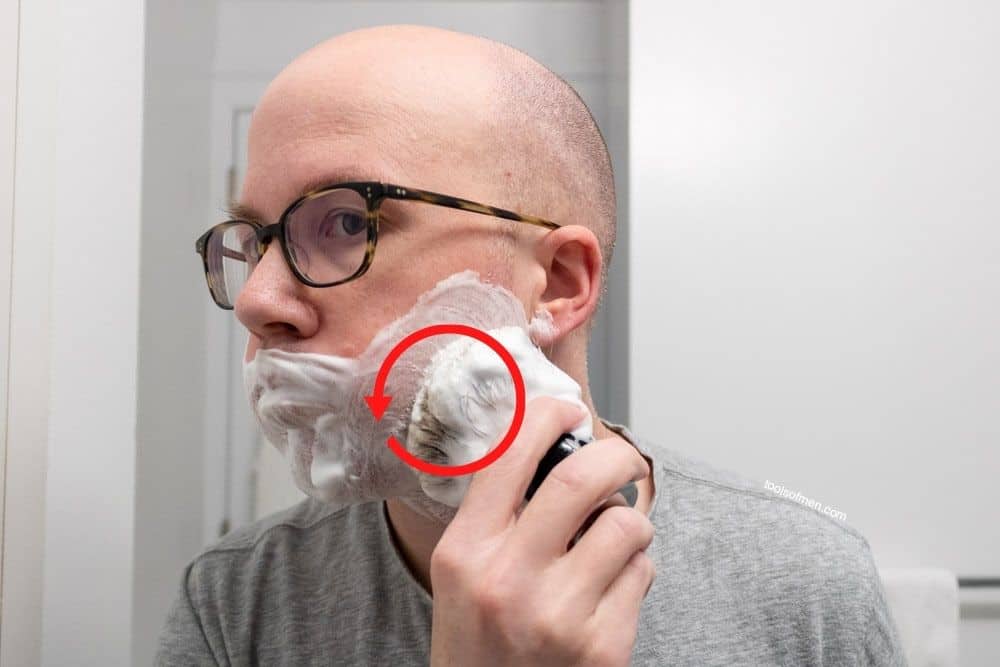
Or in long directional strokes:
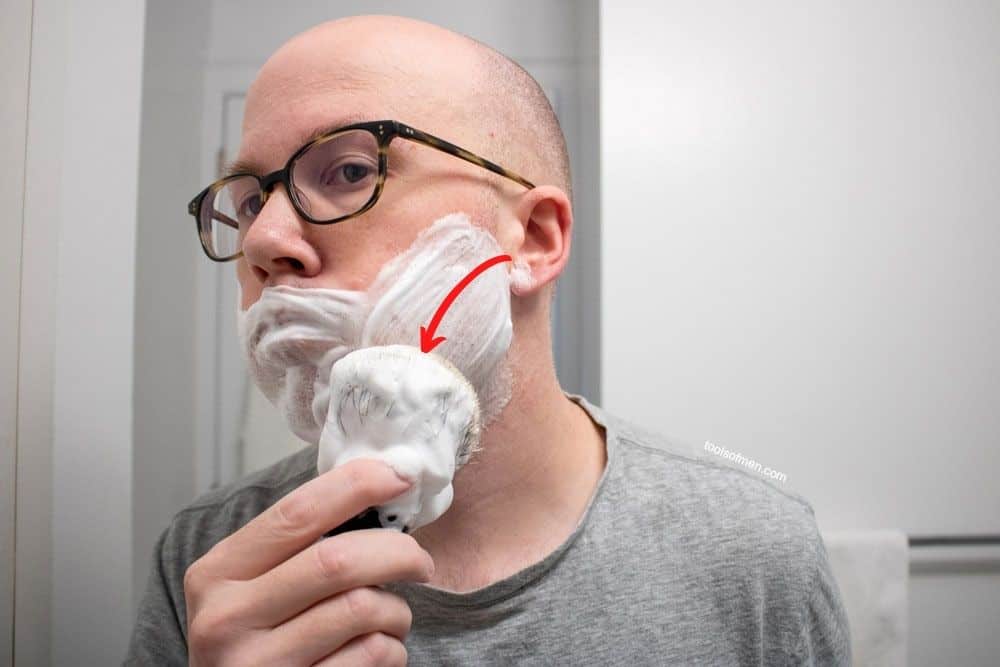
A circular application may provide a deeper exfoliation that removes dead skin cells and clears pores. No matter the application method you prefer, the goal is to have the entire shaving surface covered in a rich lather that is well-cushioned.
Ideally, the lather should look like this when finished:

How to Lather with a Shaving Brush Only
To generate a lather with just a shaving brush, you will want to take the following steps:
1. Place the Shaving Brush Under Running Water
To soak the bristles of the shaving brush without a bowl, let the shaving brush rest under warm to hot water for approximately 15 seconds:
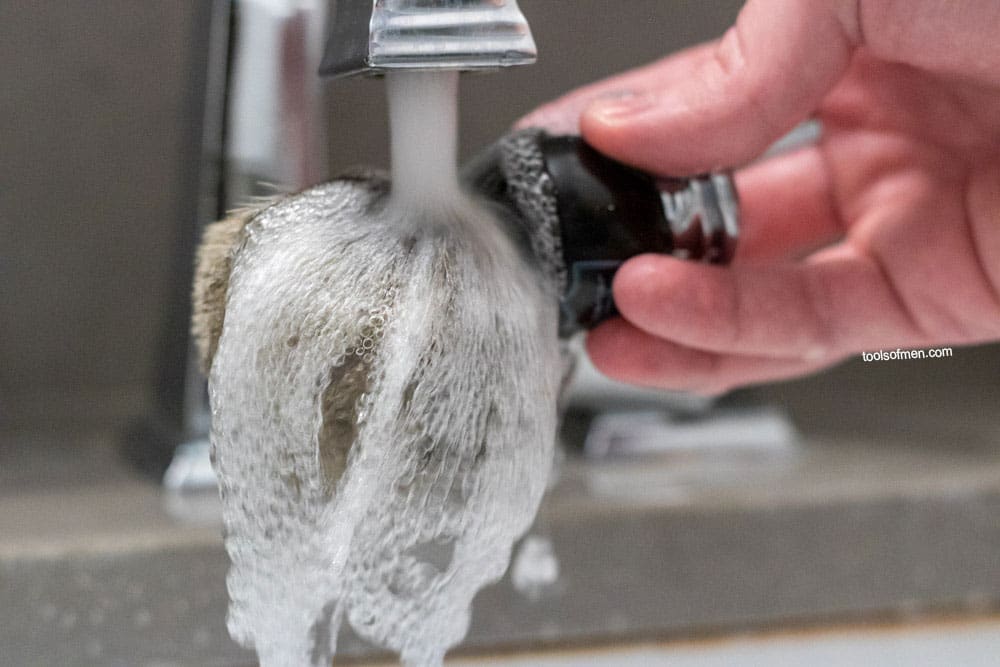
And then wring out the excess water.
2. Load the Shaving Brush
Adding shaving cream to the brush will be identical as before. You will want to add approximately an almond-sized amount of soft-bodied shaving cream to the bristles.
3. Apply Water to Your Face
Prior to using the shaving brush, you should splash warm water directly on your face. This provides the shaving brush and cream with additional water that will be required to make a good lather.
4. Work the Loaded Shaving Brush onto your Face
When you begin working the loaded shaving brush to your face, the shaving cream will likely be pasty or appear dry as demonstrated here:
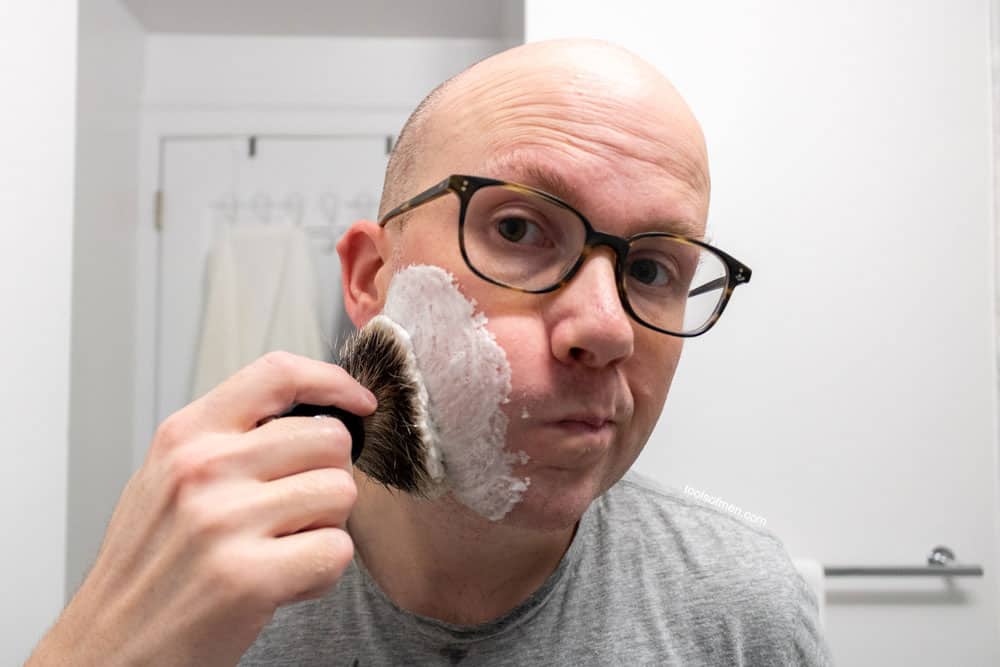
Full face application here:
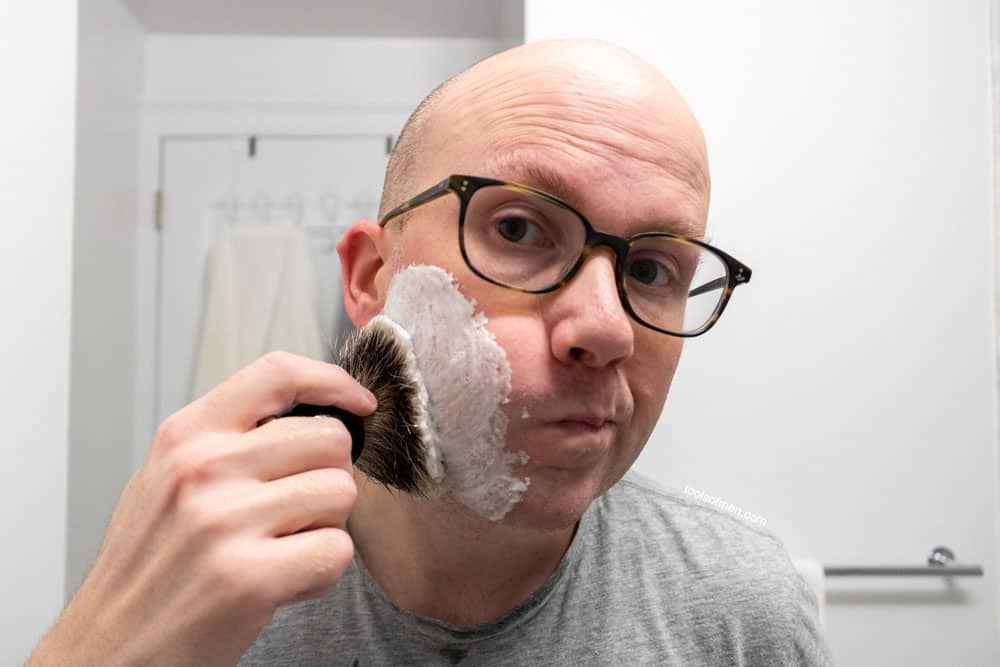
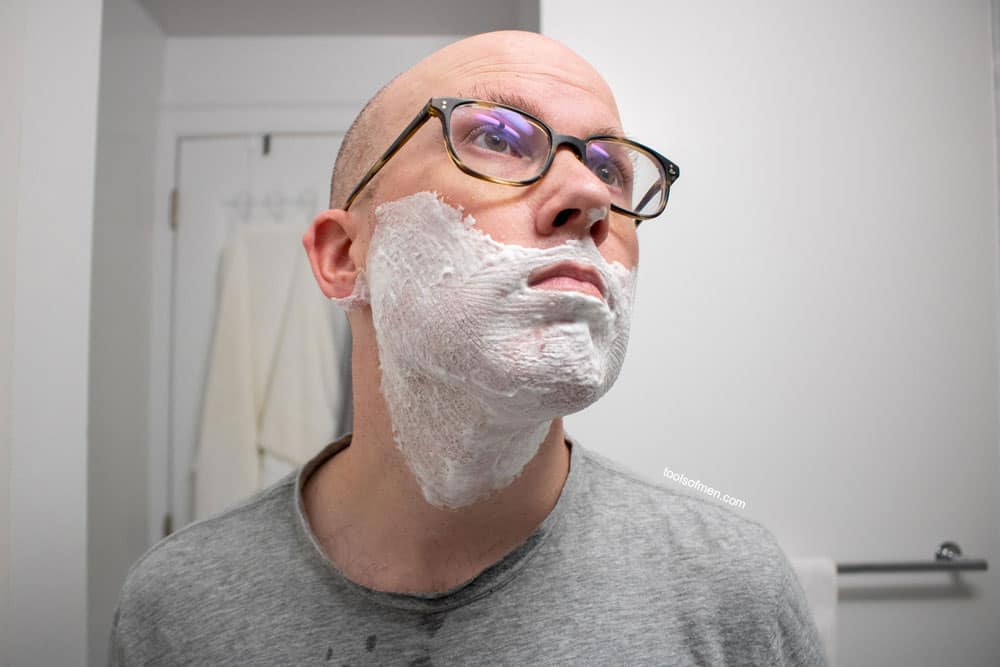
This shaving cream will need additional water before a good lather develops.
5. How to Add Water
The shaving brush will need to be placed under the running water of your faucet. Be careful not to over-water your shaving brush. Remember, you can always add more water later.
To demonstrate, just let the tips of the shaving brush slightly go into the running water:
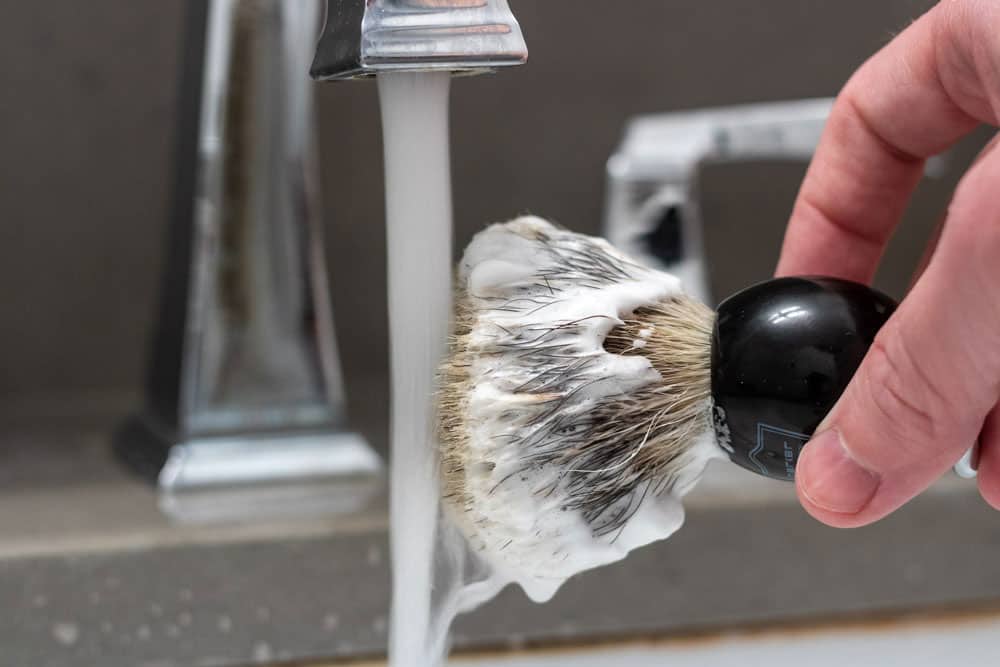
6. Continuously Work on Generating a Lather
Once the water has been added to the shaving brush, continue working the lather until you have results that you are satisfied with. Ideally, the lather should look like this when done:
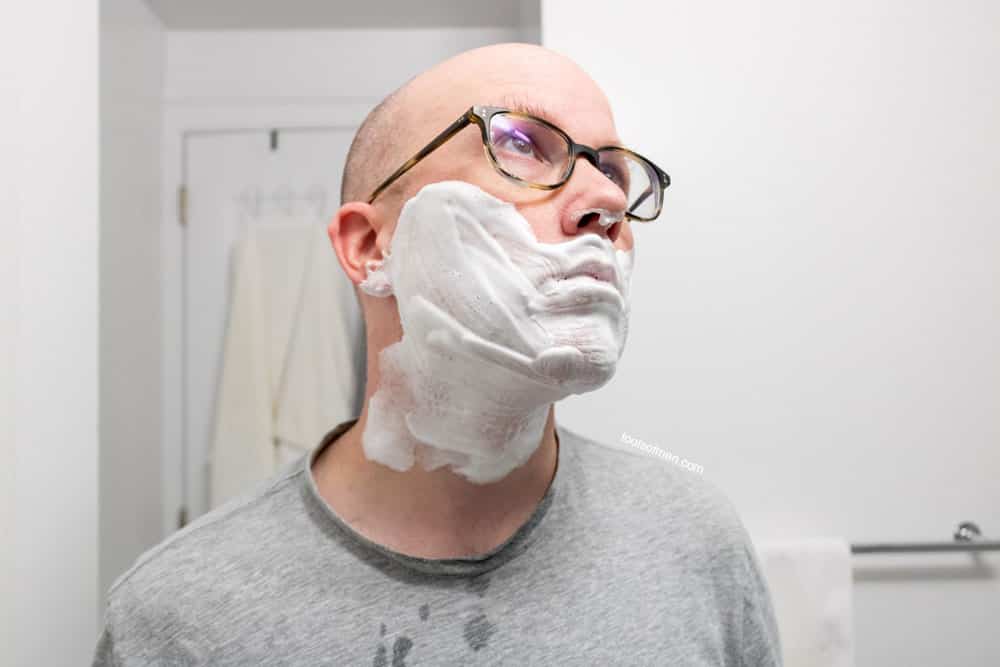
How to Lather Shaving Cream with Only Your Hands
Here are the steps required to lather a shaving cream with just your hands:
1. Apply Shaving Cream to Dry Hands
Either squeeze or scoop out approximately an almond to quarter-sized amount of shaving cream and place it into the palm of your hand:
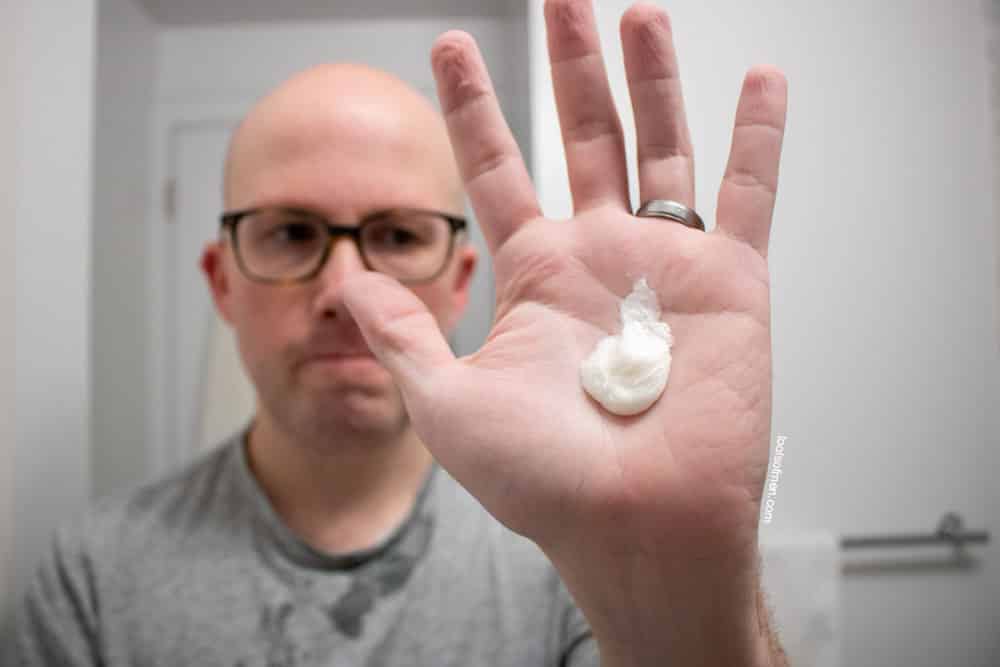
2. Rub Hands Together for an Even-Coating
Spread the shaving cream between both hands so it can be applied consistently to your face:
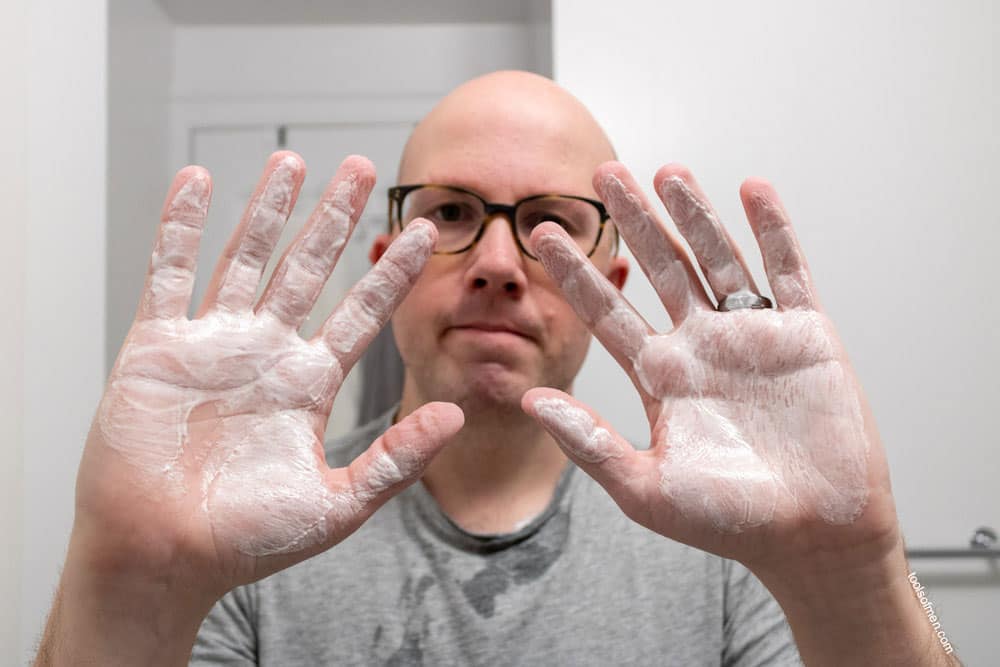
3. Apply the Shaving Cream to Your Face
Work the shaving cream onto your face in both circular motions and straight passes:

Initially, the shaving cream will appear to be both dry and thin.
4. Add Warm Water and Continue Lathering
When adding warm water, you will want to do this in small increments. Let the water go across just your fingertips:
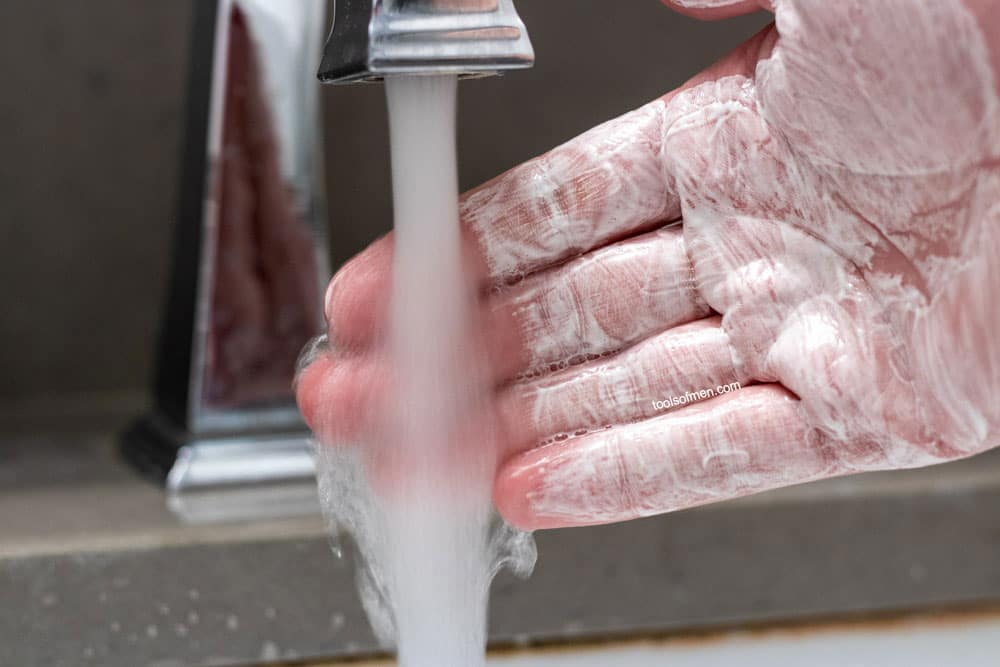
With small, repeated applications of water, the shaving cream will begin to brighten and develop:
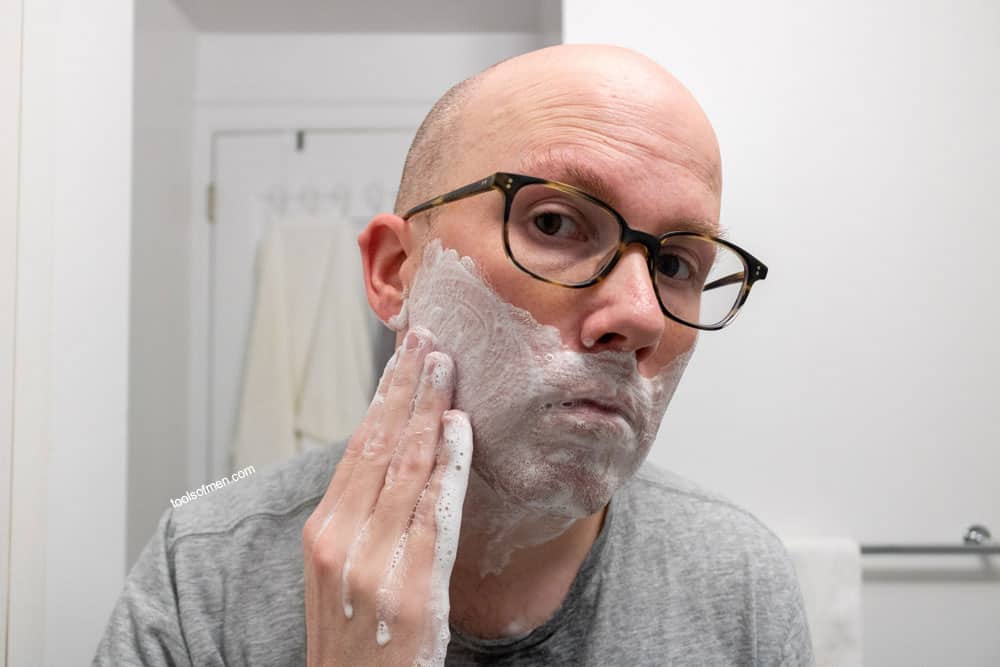
After continuously adding water, you can expect the lather to develop into the following:
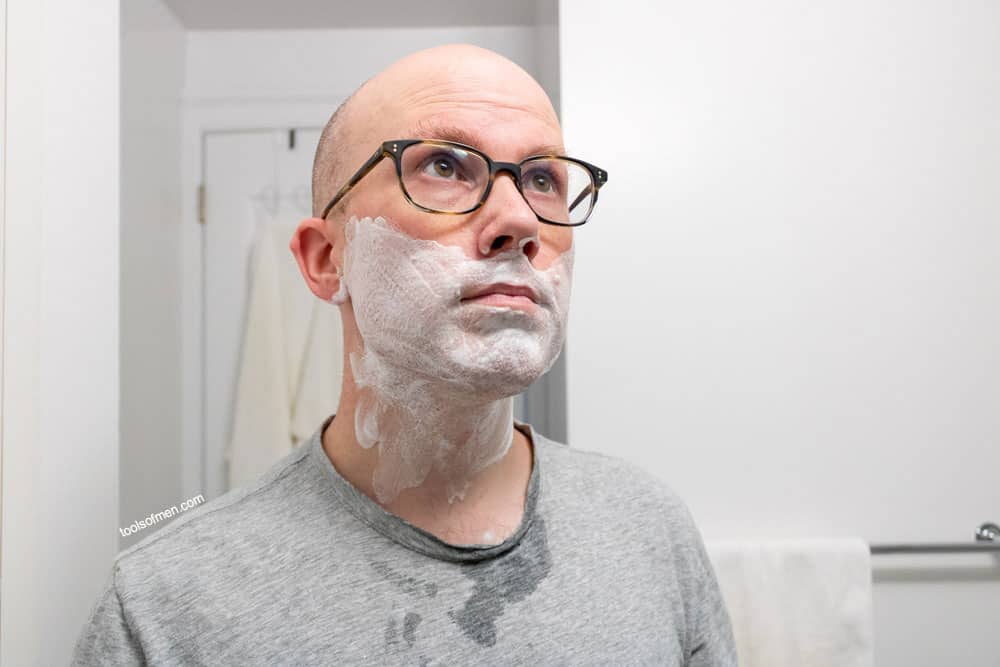
While not optimal, a hand lather can provide enough lubrication for shaving.
How to Lather Shaving Soap
Like shaving cream, shaving soap is easy to lather.
1. Let the Shaving Brush Bloom
By soaking the shaving brush in water for one minute, you allow the bristles to fully absorb or retain water. This will allow for better lathering results.
2. Wring Out Excess Water
Give the shaving brush a gentle squeeze to remove excess water.
3. Load the Shaving Brush
Begin by rotating the brush in a circular motion on the shaving soap:
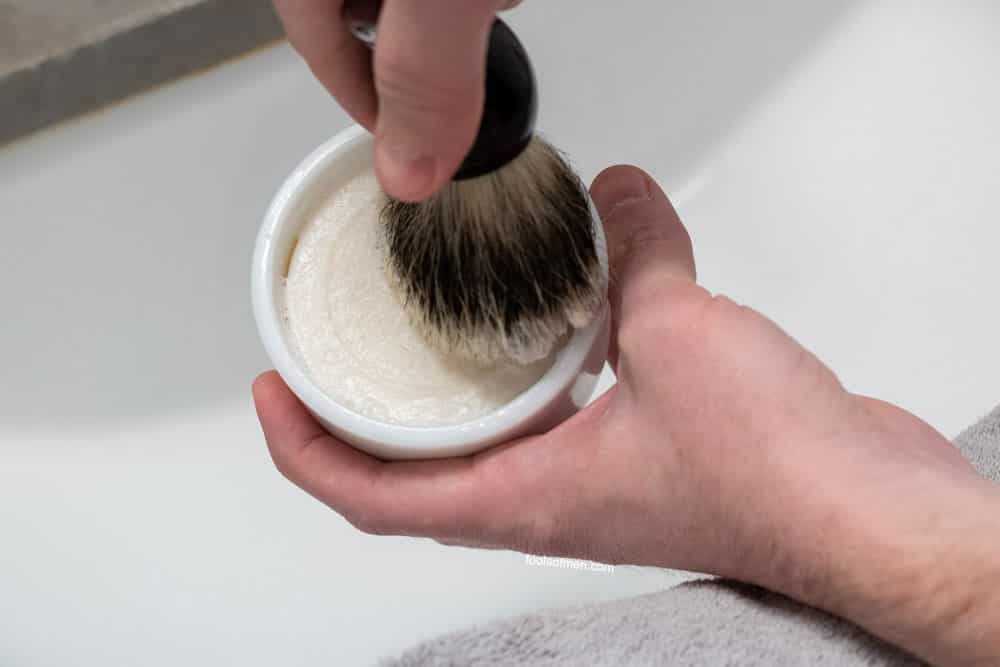
Alternate the pressure of the brush. This allows for more shaving soap to be loaded.
When finished, the shaving brush should look similar to this:
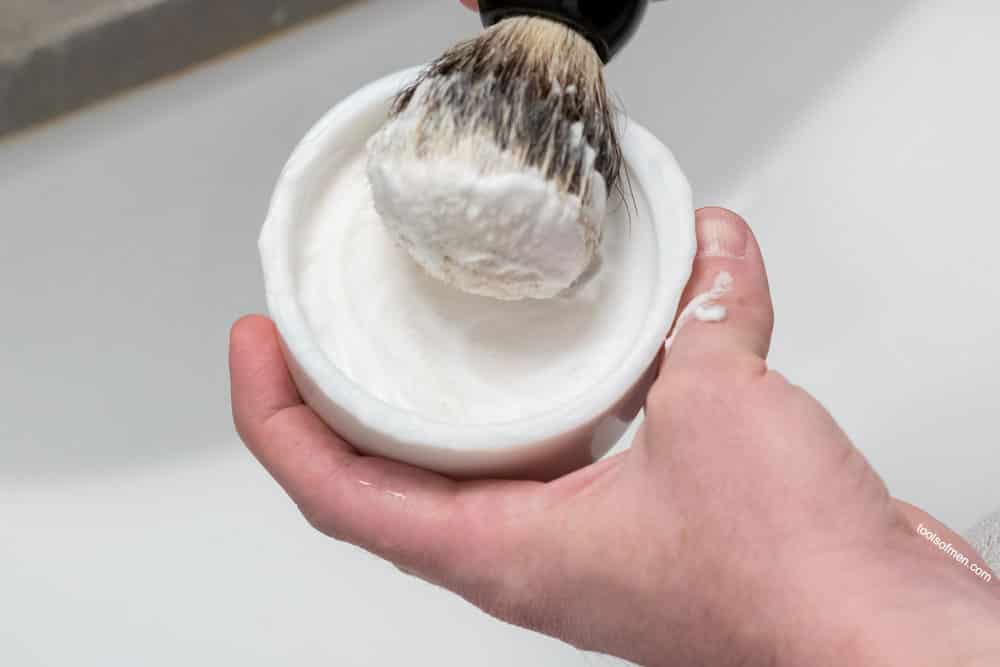
4. Mix the Shaving Soap in a Bowl
Begin by adding a little bit of water to the shaving bowl:
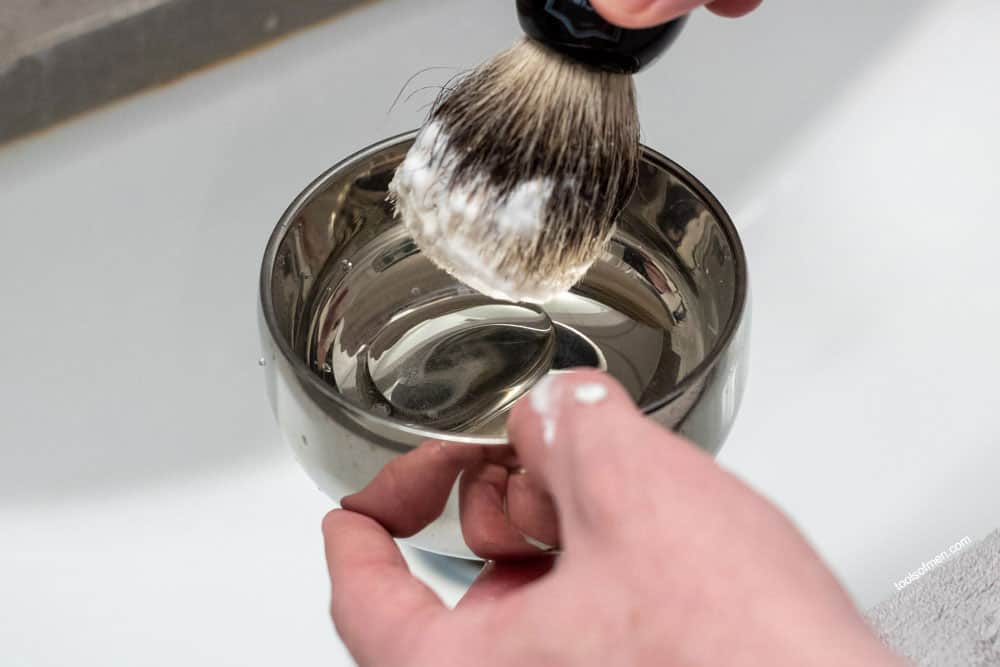
As was the case with shaving cream, alternate the pressure and move the brush in a circular motion.
5. Expected Lather
The lather of a shave soap should be of a similar consistency as a shaving cream. Ideally, it should have a dense texture, be non-pasty, and feel slick:
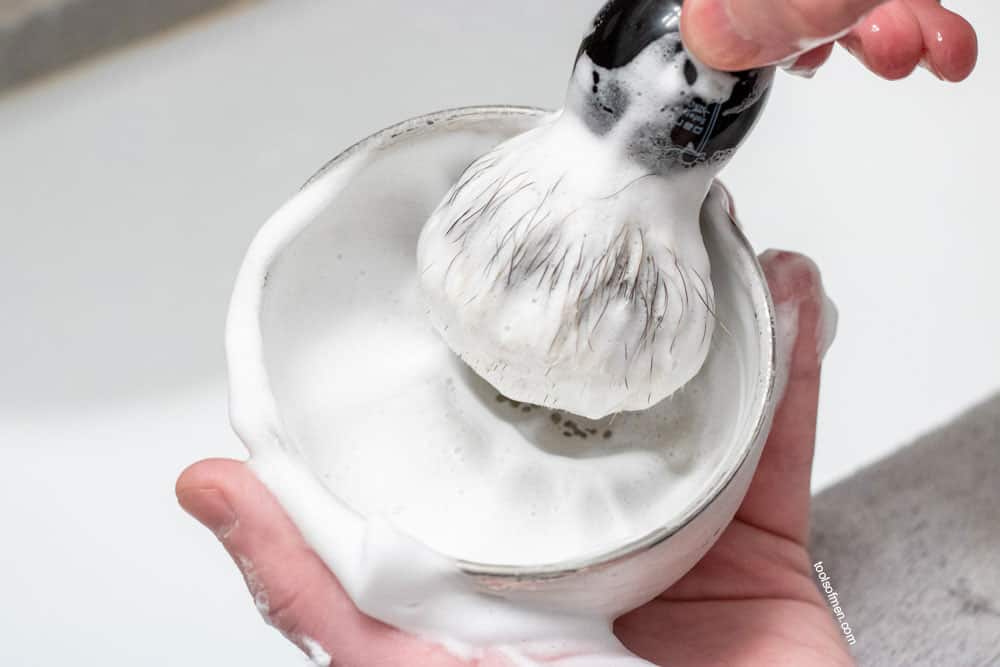
6. Apply and Shave
Once an acceptable lather has been generated, apply the shaving soap to your face and begin shaving. Reapply for any additional passes.
Helpful Advice for Better Results
Here are a few demonstrations of lathers that are too dry or too wet:
Dry or Pasty Lather
Here’s a look at a lather that is too dry:
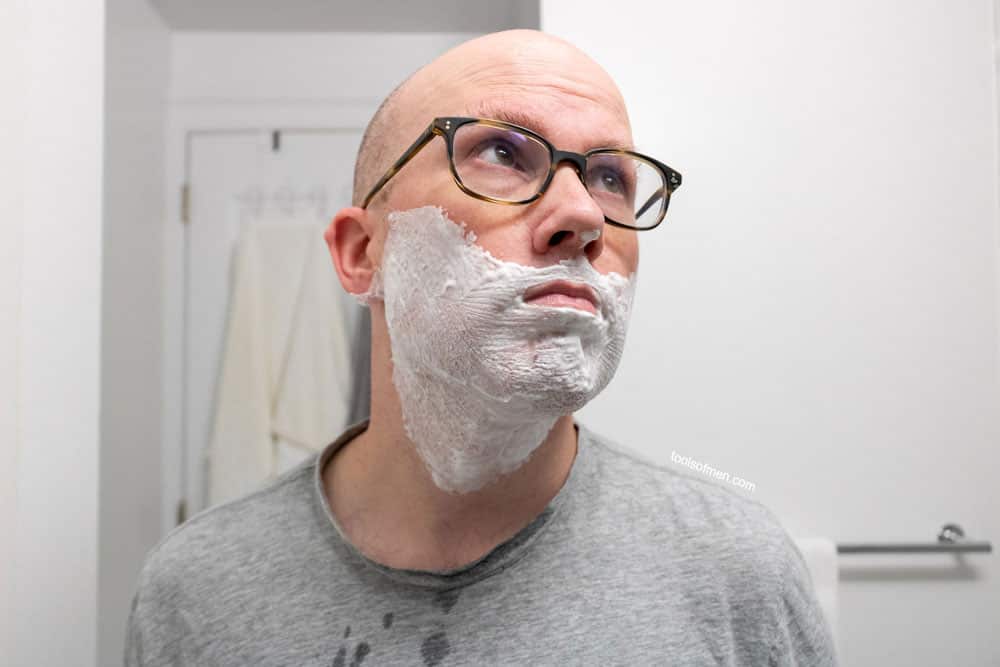
As you can see, this lather appears pasty and stiff. While this lather can work, more water will help to provide additional cushion, insulation, and lubrication.
Watery Lather
Here’s a look at a lather that is too wet:
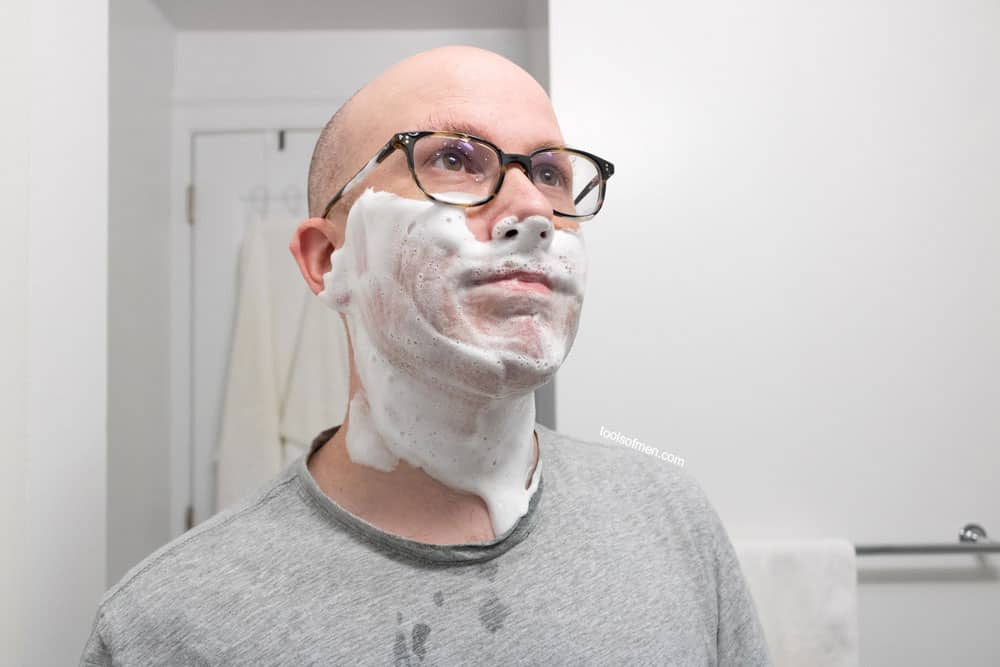
As you can see, a watery lather will be runny and have big bubbles throughout. Additionally, a lather with too much water will often appear thin in some places and thicker in others. If your lather looks like this, it’s best to rinse off and start over.
Common Questions About Lathering a Shave Cream
Does the quality of the shaving cream matter when lathering?
The most significant difference between shaving creams is the quality and comfort of the shaving experience and not necessarily how much water is required to lather. Each shaving cream will require different amounts of water in order to generate a rich or thick lather. Additionally, some shaving creams may be latherless by design such as those from Cremo.
Does the type of shave brush matter?
When learning how to lather shaving cream, the type of shave brush that you are using will have little impact on the final results. Therefore, it is recommended to train using a cheaper synthetic shaving brush rather than an expensive silvertip badger brush. As you become more experienced in lathering, you will begin to realize the properties that a nice shaving brush has to offer.
Does the type of razor matter?
In most cases, the type of razor that you are using doesn’t determine the lather consistency of the shaving cream. Straight razors and safety razors tend to perform better when the shaving cream provides both a good cushion and a lubricated base. A cartridge razor will be less likely to clog with a thinner shave cream lather.
Does the amount of water matter?
When whipping a lather from shaving cream, the amount of water needed is important. However, there is no measured amount that is recommended. Instead, you should concentrate on the desired consistency and make adjustments as necessary.
Why does a good lather matter?
When looking to achieve both close and comfortable results, a good lather will help to retain moisture and decrease the friction between both the razor blade and your skin. A well-insulated lather will help the hair follicles swell and soften which helps to decrease irritation or razor burn.
Practice Makes Perfect
Whether you are using a bowl or employing a direct-to-face lathering, practice is key. When you practice several times, you will quickly learn which water ratio brings out the best properties in your preferred shaving cream.